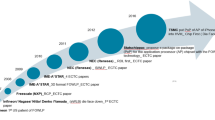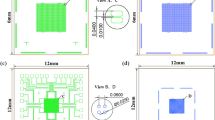Abstract
As the consumer electronics market keeps expanding, the system-in-package (SiP) has become more and more popular. The SiP has the benefits of space efficiency and an integrated flexible function by stacking different function dies in a single package. With die stacking, bi-material interfacial delamination becomes a primary concern of reliability testing. This work evaluates the impact of encapsulated molding compound (EMC) and underfill material on the reliability test for the low-K wire bond-stacked flip chip CSP (WB-sFC CSP). The CSP packaging size is 16 × 16 × 1.2 mm with a 4 × 5 × 0.15 mm low-K wire bond die stacked on a low-K 8 × 8 × 0.15 mm flip chip die. The reliability testing condition is JEDEC MSL 2a (reflow peak temperature is 260 °C) followed by the temperature cycling test (TCT, −55 to 125 °C) of 1000 cycles. The severe pre-conditioning environment makes the packaging materials selection a challenge. Delamination between the interface of the underfill and other packaging components leads to premature failure during preconditioning. TCT stress also induces delamination between the interface of the backside of the bottom die and the encapsulated molding compound. Initially, the EMC selection was decided by the first stage experimental result based on the assembly yield. A DOE was performed to study the effect of underfill property on the packaging stress using the finite element analysis (FEA). According to the FEA results, the trend of underfill property selection for solving the underfill delamination and the backside of the bottom die delamination were in conflict. The low coefficient of thermal expansion (CTE) and the high Young’s modulus (E) underfill can reduce the stress located at the backside of the bottom die corner but it will increase the underfill stress. Plasma cleaning was applied to improve the underfill and the packaging components interface bond strength prior to dispensing the underfill. In the second stage, three underfills were evaluated based on the three different reasons, low modulus for preventing underfill delamination, high modulus for reducing the backside of the bottom die stress, and low moisture absorption by reducing steam pressure during preconditioning. The experimental results in this work demonstrate that only a high modulus underfill can pass the reliability test.











Similar content being viewed by others
References
T. Yamazaki et al., Real chip size three-dimensional stacked package. IEEE Trans. Adv. Packag. 28, 397–403 (2005). doi:10.1109/TADVP.2005.852328
T.T. Yan, M. Lim, H. Shen Ng, Design Analysis of Solder Joint Reliability for Stacked Die Mixed Flip-Chip and Wirebond BGA. EPTC 2002, pp. 391–397
J. Zhang, M. Todd, J. Huneke, Effect of die attach configuration in stacked die packages. High Density Microsystem Design and Packaging and Component Failure Analysis (2004), pp. 231–235
C.Y. Mao, R.S. Chen, Packaging parameter analysis on solder joint reliability for twin die stacked packages by variance in strain energy density of each solder joint. Electronics Systemintegration Technology Conference (2006), pp. 934–941
F. Sweeney et al., Reducing the Effect of Mechanical Stress on Low-K Die – Case Study. EPTC 2005, pp. 720–722
X. Zhang, T.Y. Tee, H.S. Ng, Comprehensive Hygro-thermo-mechanical Modeling and Testing of Stacked Die BGA Module with Molded Underfill. ECTC 2005, pp. 196–200
K. Rahul, B.K. Lim, H. Liu, Package Design Optimization and Material Selection for Stack Die BGA Package. EMTS 2004
S.K. Lim, Physical design for 3D system on package. IEEE Des. Test Comput. 22, 532–539 (2005). doi:10.1109/MDT.2005.149
M.L. Sham et al., Adhesion Characteristics of Underfill Material with Various Package Components after Plasma and UV/Ozone Treatments. ISEMP 2001, pp. 208–213
C. Leea, R. Gopalakrishnan, K. Nyunt, Plasma cleaning of plastic ball grid array package. Microelectron. Reliab. 39, 97–105 (1999). doi:10.1016/S0026-2714(98)00184-X
Acknowledgement
The author would like to thank Joe Lin and Kevin Tsai from Siliconware Precision Industries Co., Ltd for their assembly support.
Author information
Authors and Affiliations
Corresponding author
Rights and permissions
About this article
Cite this article
Chen, K.M. Impact of packaging materials on reliability test for low-K wire bond-stacked flip chip CSP. J Mater Sci: Mater Electron 20, 484–489 (2009). https://doi.org/10.1007/s10854-008-9756-4
Received:
Accepted:
Published:
Issue Date:
DOI: https://doi.org/10.1007/s10854-008-9756-4




